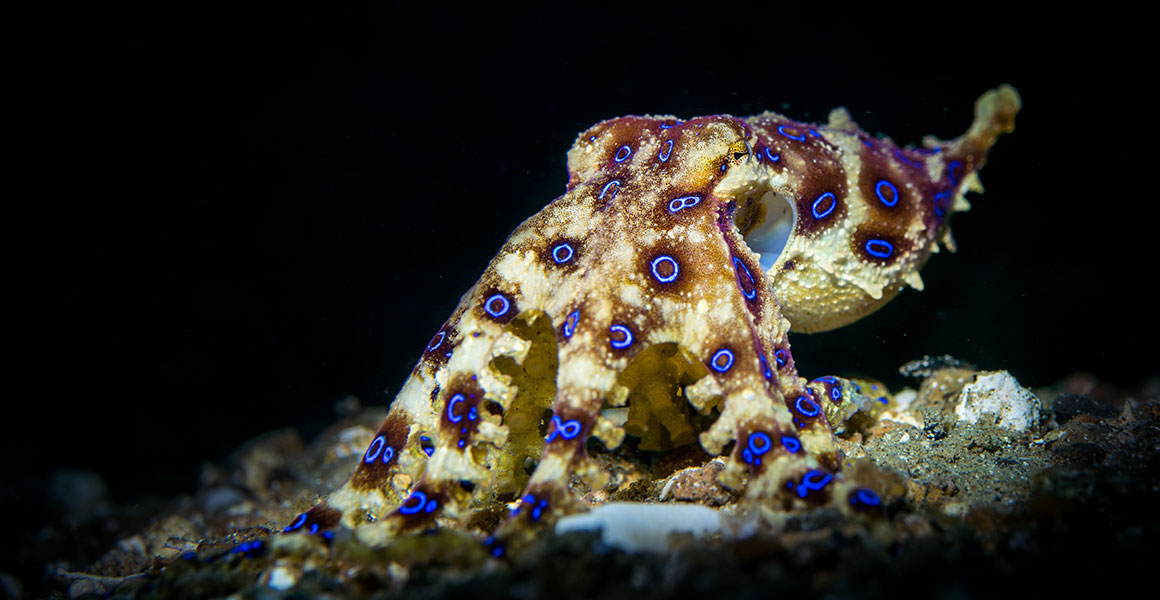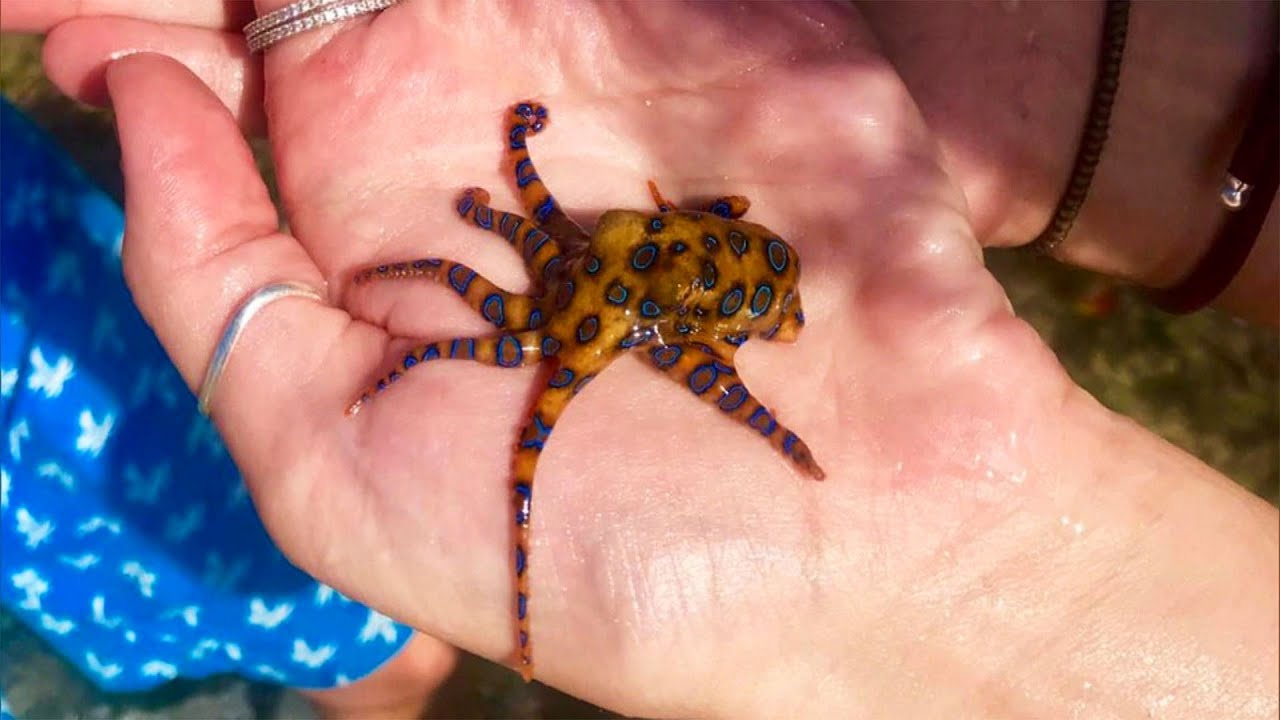Poisonous Octopus On A Dinner Platter In Guangdong China
A poisonous octopus on a dinner platter in Guangdong China, has been the talk of the town recently. A worried customer put a picture of a sea creature on the internet and asked if anyone knew what it was. The man who saw the strange animal got a quick response from a science blogger, just in time to keep him from eating seafood that would have killed him.
Author:Professor JhizReviewer:Scarlet SunsetJan 25, 202316 Shares607 Views

A poisonous octopus on a dinner platter in Guangdong China, has been the talk of the town recently. A worried customer put a picture of a sea creature on the internet and asked if anyone knew what it was. The man who saw the strange animal got a quick response from a science blogger, just in time to keep him from eating seafood that would have killed him.
He posted a snapshot of numerous small octopuses on a flat basket filled with crushed ice, ready to be added to a hotpot. He added the following question to his caption:
Can I eat it? I am waiting for your reply. A bit anxious.
On his Weibo account, the man polled his friends and online pals. Weibo is a microblogging program developed by Sina Corporation in 2009 that relies on user relationships to share, disseminate, and obtain information.
Bo Wu Za Zhi, the science education blogger mentioned previously, saw the picture and commented a few minutes later after the customer posted on Weibo. He said:
“„It is a leopard-striped octopus or blue-ringed octopus. Its toxicity is very strong and won’t be neutralised when heated. We’ve seen cases where blue-ringed octopuses are, on rare occasions, accidentally mixed in with ordinary octopuses sold at markets, although the possibility of this happening is very low.
Blue-ringed octopuses are among the most venomous marine species on the planet. Because their venom includes the potent neurotoxin tetrodotoxin, they are exceedingly hazardous to humans if handled. When other Weibo users saw the blogger's answer, they were scared for the diner's safety. Meanwhile, someone wrote:
“„Are you okay? You haven’t eaten it, right? Be quick to tell the restaurant owner this octopus is poisonous and cannot be eaten.
The man who recounted his terrifying experience in a restaurant responded by saying he had not eaten it and that it had been removed from the table. Weibo users have viewed the incident over 420 million times, making it a major topic of discussion in mainland China.
Another user later commented:
“„If I were the man, I would just take a picture of this beautiful octopus and share it on social media to show off that I ate a unique octopus before eating it.
Another person wrote:
“„The man who became suspicious of this octopus has saved not only his life and the lives of his friends, but also saved the restaurant owner from a stay in prison because if they ate it and died, the restaurant owner would be charged for the accident.
Tiny And Colorful But Extremely Lethal Octopus
The beauty of blue-ringed octopuses can't be denied. When these animals are scared, they show off the blue rings on their bodies and arms that give them their name. Blue-ringed octopuses look cute and would be great for Instagram, but they are some of the most poisonous animals in the ocean.
The blue-ringed octopus is a seriously deadly species of octopus. The Pacific and Indian oceans are home to these little sea creatures.
They are nocturnal, emerging from their hiding places at night to hunt crabs and occasionally small fish. These octopuses get their name from the number of blue rings that cover their bodies and tentacles. These colorful rings are used to scare off potential predators.
Blue-ringed octopuses employ their chromatophores for camouflage in the same way that many other octopuses do. They prefer to spend their time hiding from predators in cracks and crevices.
Blue-ringed octopuses' vivid threat displays aren't merely to frighten predators. As previously stated, blue-ringed octopus salivary glands produce tetrodotoxin (TTX). According to some sources, TTX is 1,000 times more poisonous than cyanide.
Though a study discovered that TTX can be ingested and can make it about 50 times less dangerous than when it is supplied through other means, there has been at least one instance of human poisoning brought on by someone inadvertently eating a blue-ringed octopus. In December 2010, an unknown octopus was eaten in Taipei, which led to the incident.
The Blue-Ringed Octopus Facts
They Contain Two Forms Of Venom
The blue-ringed octopus is claimed to have two forms of venom in its saliva: one to kill their prey and the other to protect itself. The octopus primarily feeds on small crustaceans at night and will wait until the poison has circulated throughout its prey's body before devouring it.
Victims Begin To Experience The Affects Within Minutes
When a person is bitten, they may not realize it since the bite is minor and results in little to no discoloration of the skin (bite region) and only a tiny drop of blood. Despite the small size of the bite, the sufferer will experience the following symptoms within 5 to 10 minutes: paresthesias, numbness, gradual muscular weakness, and difficulties eating and breathing.
Victims may also feel nausea, vision abnormalities, vomiting, and difficulty speaking. When symptoms develop, unconsciousness sets in, with the danger of death following.
How To Survive An Attack By A Blue-Ringed Octopus

How to Survive the Blue Ringed Octopus Bite
People Also Ask
What Happens If You Eat A Blue-ringed Octopus?
Tetrodotoxin is produced by symbiotic bacteria in the salivary glands of blue-ringed octopuses (TTX). This chemical effectively blocks the transmission of nerve impulses and is neurotoxic. This prevents muscles from being able to contract and can have fatal results.
How Long Can You Survive A Blue-ringed Octopus?
Without any treatment or antivenin, your body will metabolize tetrodotoxin, the weapon of the blue-ringed octopus, in a couple of hours. Sadly, that is about an hour and a half and a half minutes longer than the body can go without breathing.
How Painful Is A Blue-ringed Octopus?
Even while blue-ringed octopus bites are typically mild or just slightly more painful than bee stings, they should still be regarded carefully. Every stage of envenomation is dominated by neurological symptoms, which start off as paresthesia (tingling and numbness) and progress to paralysis, which may lead to death.
Final Words
The poisonous octopus on a dinner platter in Guangdong, China, is a warning to all restaurants that commercialize seafood. If you own a seafood restaurant, you must thoroughly inspect and scrutinize your food products before serving them to customers. On the other hand, another Weibo user from Shenzhen, in southern Guangdong Province, claimed to have purchased a "blue-ringed octopus" at a Sam's Club in Futian, along with other octopus items.
On Sunday, the Shenzhen market watchdog announced that the city's supermarkets and suppliers had been inspected and that no blue-ringed octopus had been found. Professor Zheng Xiaodong of the Ocean University of China told Beijing Newsthat while blue-ringed octopuses are sometimes accidentally collected by fishermen, their distinctive design makes them easy to identify.

Professor Jhiz
Author
Professor Jhiz brings fun to teaching anatomy. Born in China, she shares her fascination for how the body works.
Students say her lectures are lively with jokes and stories. She draws cartoon diagrams that highlight structures creatively.
Professor seeks to inspire curiosity and joy in anatomy. She treats each class like a show using props and costumes.
When not teaching, Jhiz enjoys karaoke and novelty socks. Her goal is passing on a spirit of wonder to students.

Scarlet Sunset
Reviewer
Scarlet Sunset is a captivating and confident transgender individual who radiates sensuality and embraces her unique beauty. With a radiant smile and a touch of red lipstick, she captivates hearts by the poolside as the sun dips below the horizon, casting a warm glow on her unforgettable presence.
Despite societal norms and expectations, Scarlet celebrates her body, proudly defying conventional standards of beauty. Her curves tell a story of self-acceptance and empowerment, challenging stereotypes and inspiring others to embrace their own bodies without reservation.
Latest Articles
Popular Articles
